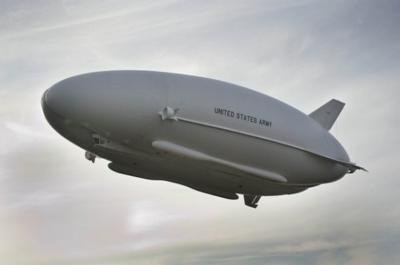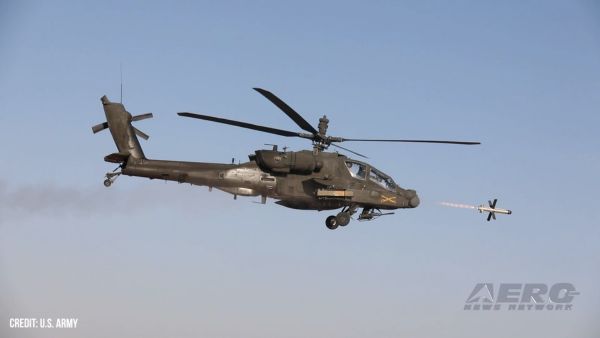Fri, Aug 10, 2012
Medium-Altitude-Long-Endurance Lighter-Than-Air Aircraft Can Operate Manned Or Unmanned
In its first flight, the Army's hybrid air vehicle known as the Long Endurance Multi-Intelligence Vehicle, or LEMV, stayed aloft over Joint Base McGuire-Dix-Lakehurst, NJ, for more than 90 minutes on August 7. The LEMV, like a blimp, is capable of carrying multiple intelligence, surveillance and reconnaissance payloads for more than 21 days at altitudes greater than 22,000 feet. The U.S. Army Space and Missile Defense Command/Army Forces Strategic Command conducted the first flight test of vehicle.

"Murphy Bays" on the LEMV can carry just about any kind of sensor or equipment, and design specifications for the LEMV require the vehicle to provide up to 16 kilowatts of electrical power for those payloads. The LEMV is intended to be used to conduct long-term Intelligence, Surveillance, and Reconnaissance, or ISR, and persistent stare-type missions, and can also be used as a communications relay.
The primary objective of the first flight was to perform a safe launch and recovery of the LEMV. A secondary goal was to verify the flight control system operation. Additional objectives included airworthiness testing and demonstration, as well as system-level performance verification. All objectives were met during the first flight.
The football field-sized LEMV can operate at altitudes greater than 22,000 feet above mean sea level, has a 2,000 mile radius of action, can carry a 2,750 pound ISR payload for more than 21 days, and boasts a fuel consumption that is more than 10 times less than comparable capabilities. Design requirements for the LEMV include providing up to 16 kilowatts of electrical power for payload, as well as runway independence.
The LEMV is designed to be a recoverable and reusable multi-mission platform. It can be forward located to support extended geostationary operations from austere locations and capable of beyond-line-of-sight command and control. During this first flight, the LEMV was manned, though the air vehicle can also operate unmanned.
Following a planned and detailed inspection of the vehicle, there will be additional manned flights.
(Image provided by the U.S. Army)
More News
Check out https://affordableflying.net/attend/ Right Away and Get YOUR Tickets To the Affordable Flying Expo! OK.... with a little over a month to go, it’s time to get seriou>[...]
"Amelia made it almost three-quarters of the way around the world before she suddenly, and without notice, vanished—never to be seen again. Her disappearance, almost 90 years>[...]
Aero Linx: Cessna 150-152 Club The Cessna 150-152 Club has been the go-to place for information about the care and operation of the World’s Most Popular Two-Place Airplane si>[...]
Hover Taxi Used to describe a helicopter/VTOL aircraft movement conducted above the surface and in ground effect at airspeeds less than approximately 20 knots. The actual height ma>[...]
Also: Purdue In Space?, 4 SpecOps Lost In Helo Crash, Solid-Fuel Ramjet, Ultra-High Airspace Over FL The US Army recently confirmed its plans to thin out its active duty aviation r>[...]
 Ticket Sales NOW OPEN for 2025 Affordable Flying Expo!
Ticket Sales NOW OPEN for 2025 Affordable Flying Expo! Aero-News: Quote of the Day (09.29.25)
Aero-News: Quote of the Day (09.29.25) ANN's Daily Aero-Linx (09.29.25)
ANN's Daily Aero-Linx (09.29.25) ANN's Daily Aero-Term (09.29.25): Hover Taxi
ANN's Daily Aero-Term (09.29.25): Hover Taxi Airborne 09.26.25: Army Cuts AV-Ranks, 2025 ATC Hiring, AF Next-Gen Fighter
Airborne 09.26.25: Army Cuts AV-Ranks, 2025 ATC Hiring, AF Next-Gen Fighter



